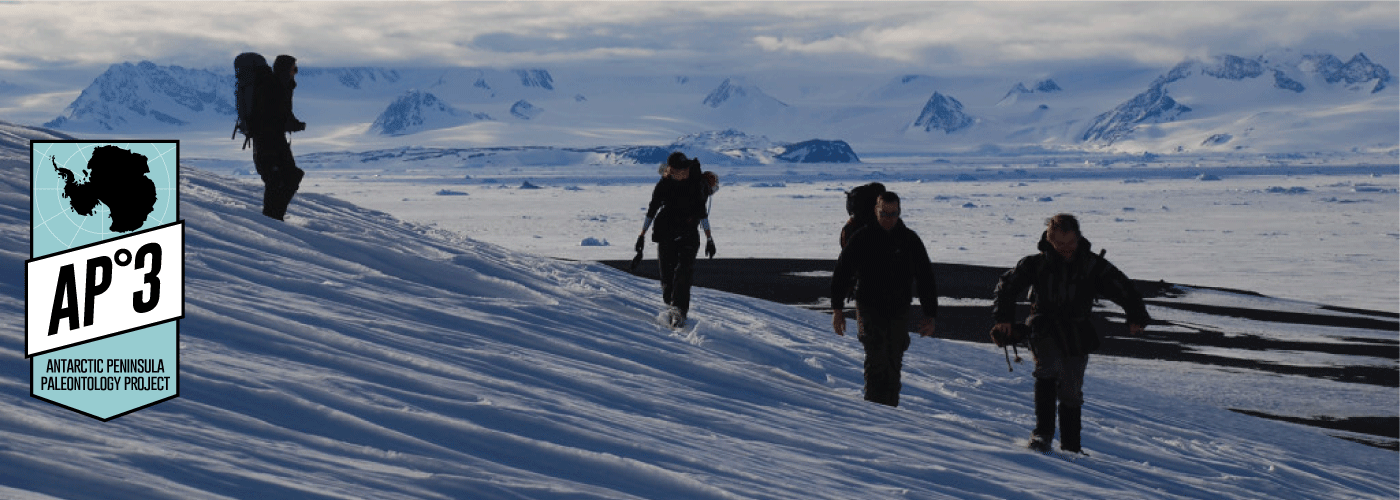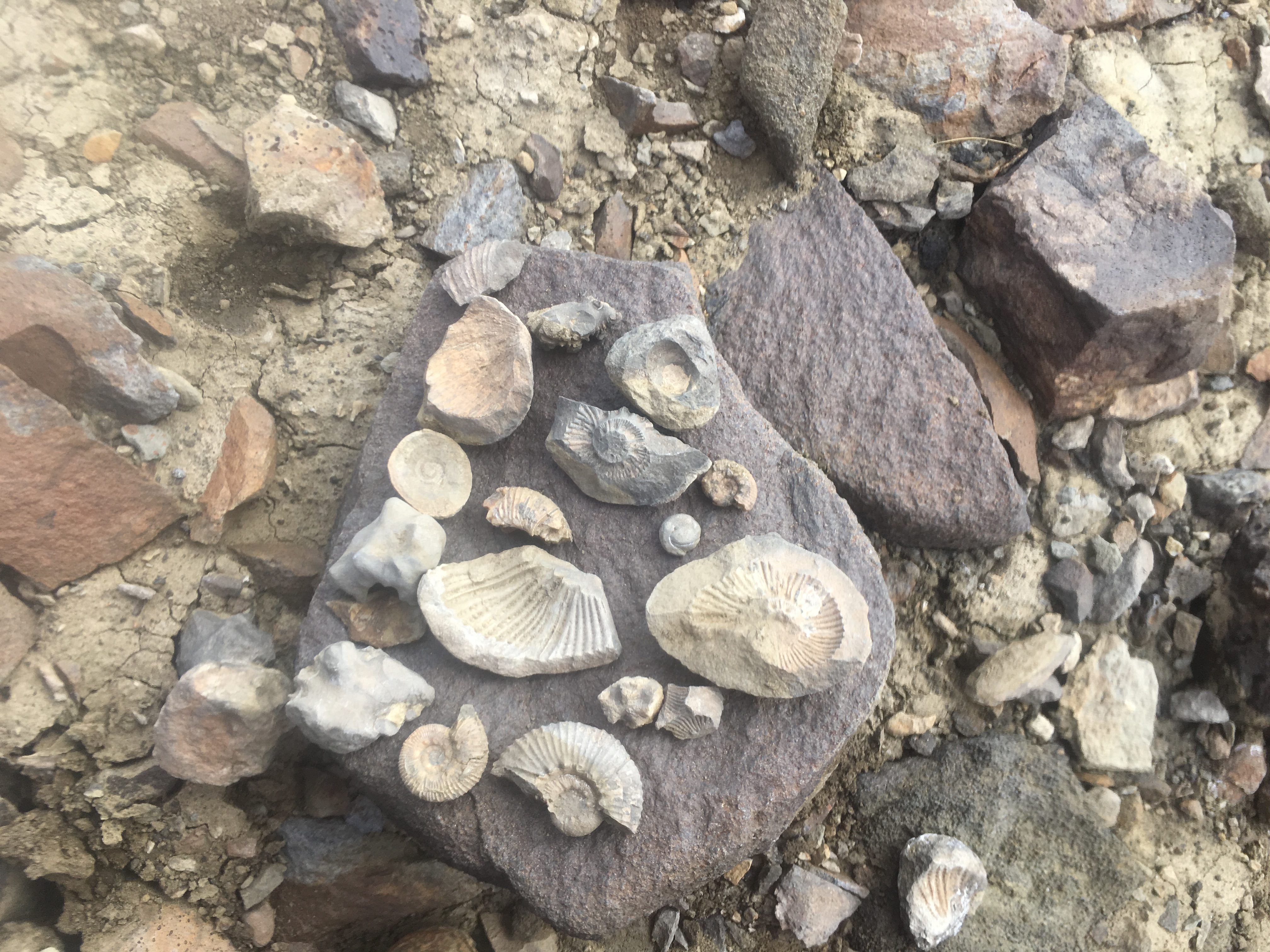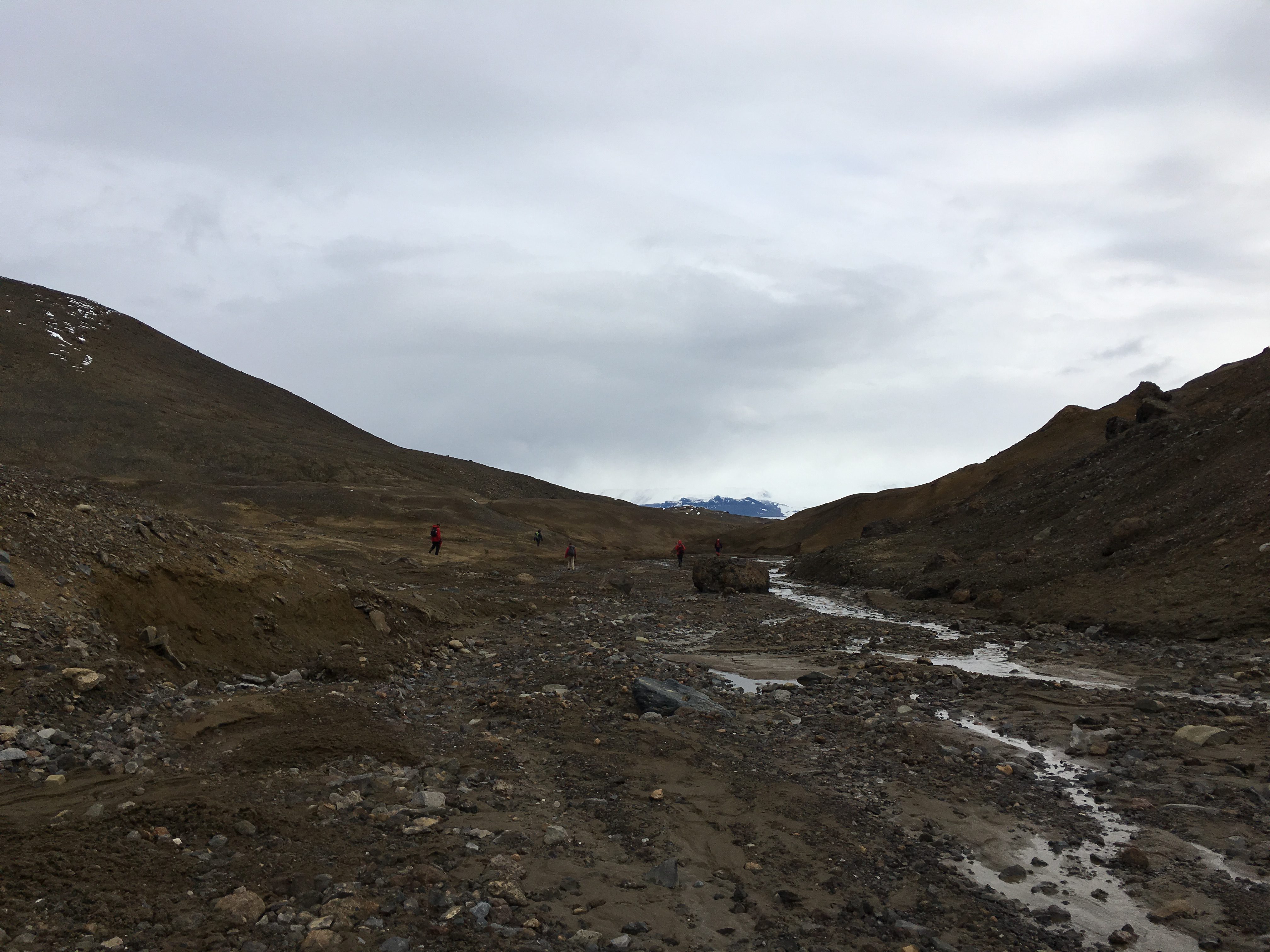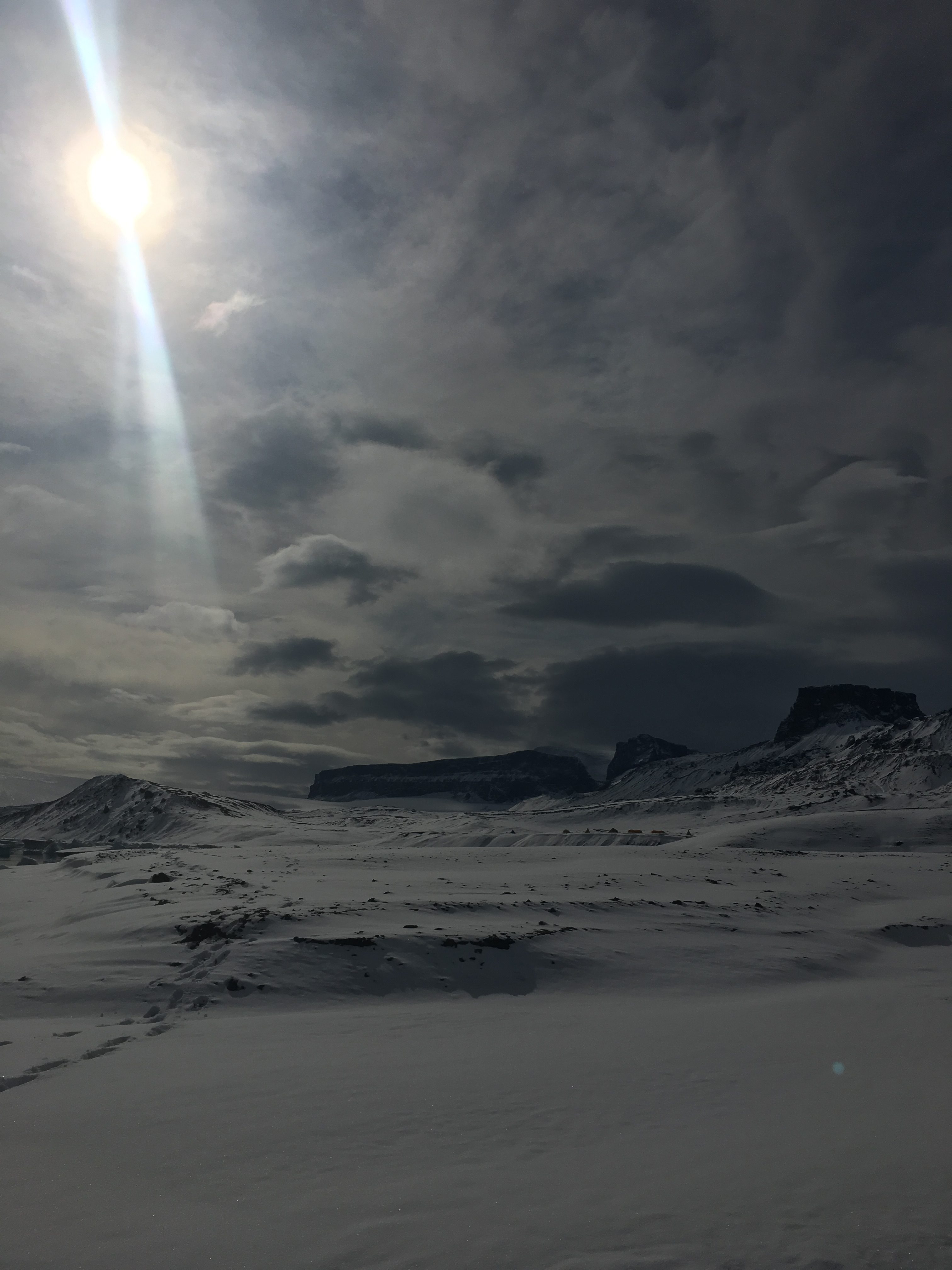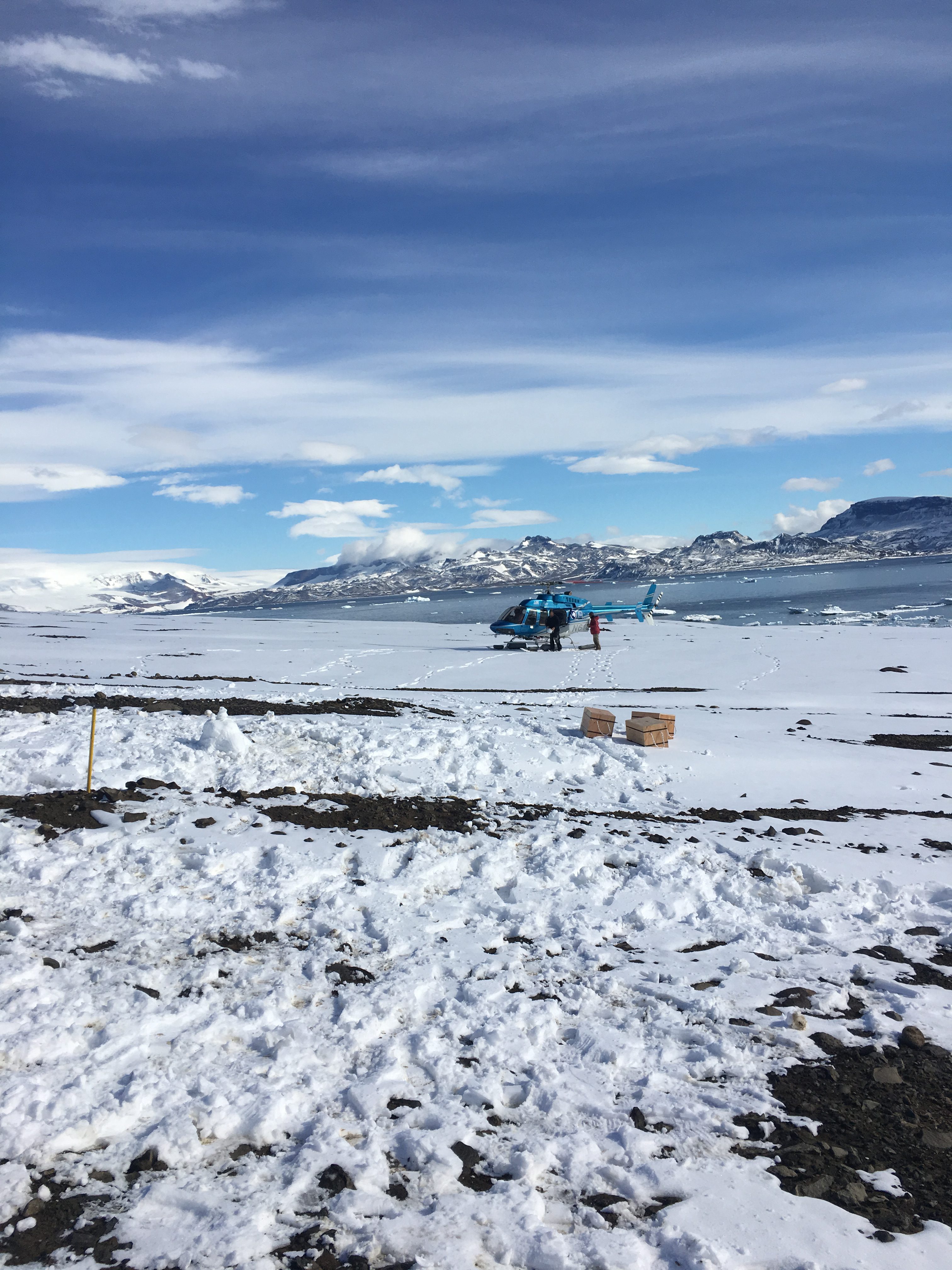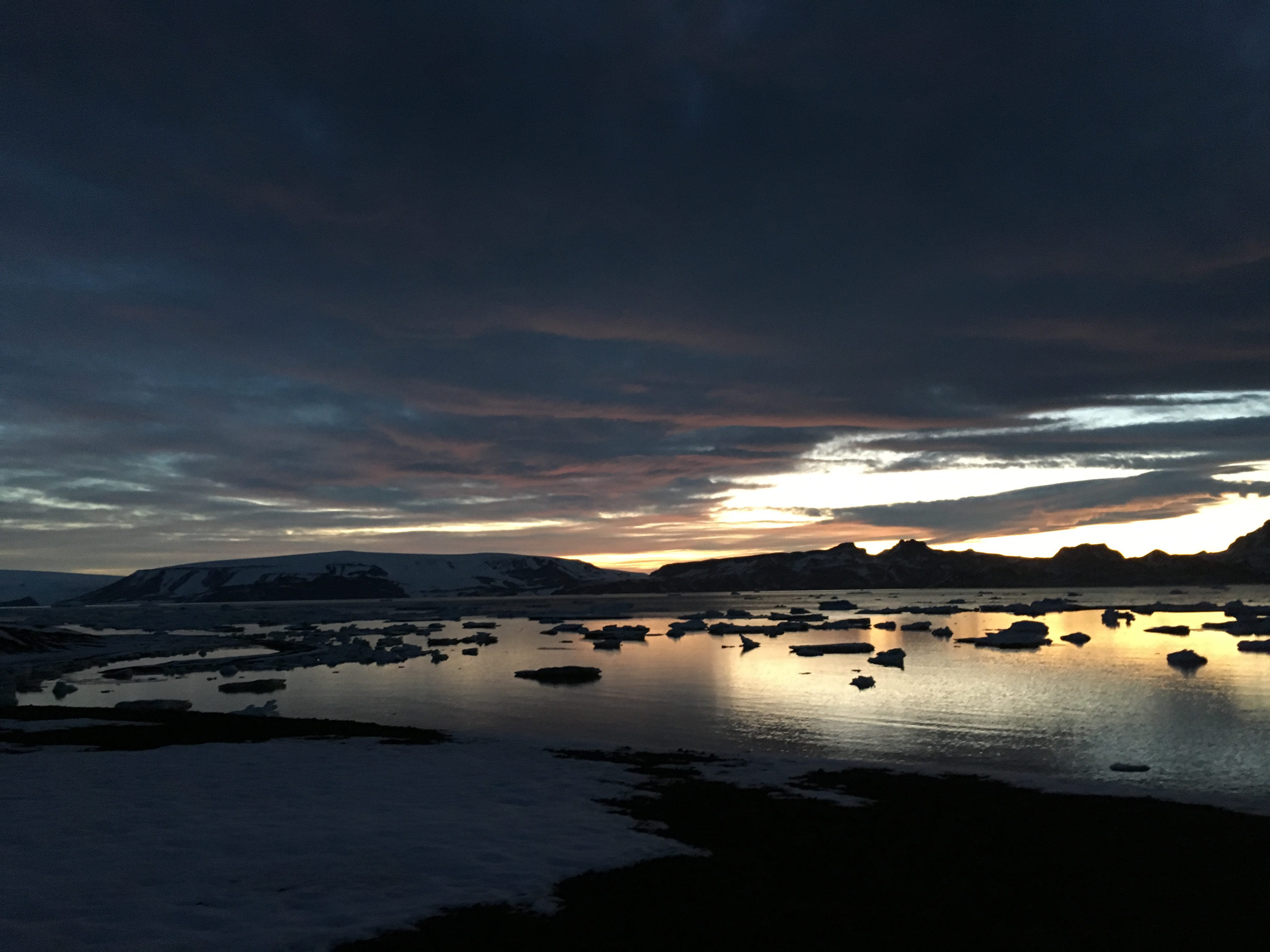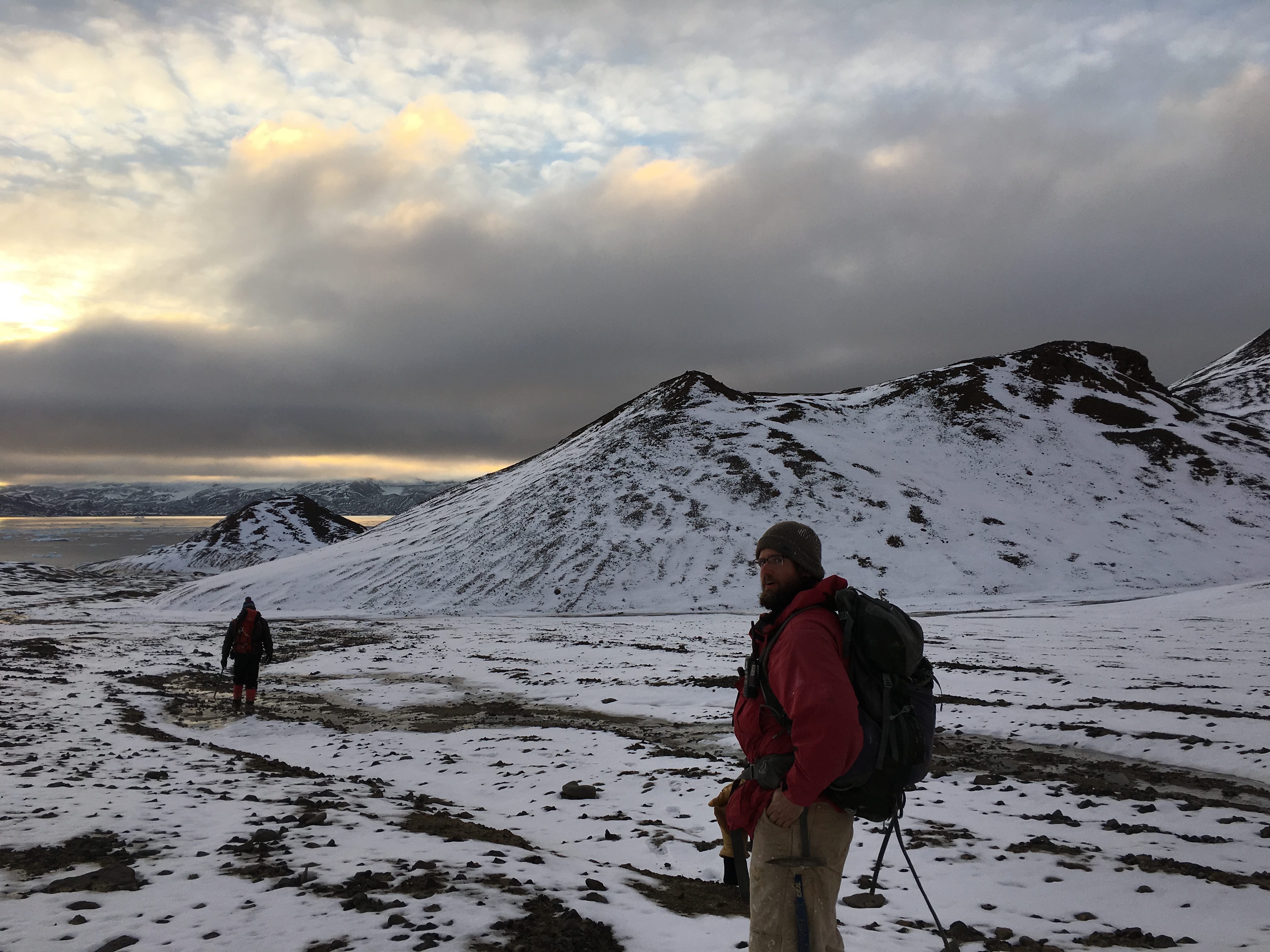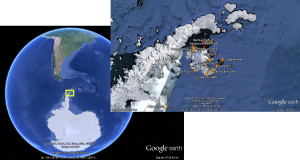
The AP3 targets for the 2016 expedition: the James Ross Island Group and Robertson Island of the northern Antarctic Peninsula.
With support from the National Science Foundation and the United States Antarctic Program, we conducted a lengthy field expedition to the James Ross Island area of Antarctica from February 2 to March 24, 2016. This expedition, supported by the research vessel RVIB Nathaniel B. Palmer, was outfitted with Zodiac inflatable boats, a metal-hulled landing craft, and two helicopters that collectively allowed us to access most or all of our sites of interest. We deployed a team of 12 scientists, including seven paleontologists, two sedimentologists, and three paleontology graduate students. Eight team members were typically divided between two field camps, while the remaining four conducted short reconnaissance forays to other sites via helicopter or watercraft. Camps were established on Vega and Seymour Islands. Sites targeted for reconnaissance or focused collecting included two regions on the north coast of Vega Island, localities on northwestern James Ross Island (e.g., Dreadnought Point, Blancmange Hill), Cape Wiman of Seymour Island, Tesore Hill and (possibly) the Sanctuary Cliffs and Dingle Nunatak of Snow Hill Island, and Cape Marsh of Robertson Island. Given the resources allocated to this expedition, the highly experienced nature of our field team, and the combination of proven localities with less-explored areas, we were able to make significant paleontological and geological discoveries. Detailed study of these finds over the past year has allowed our project to make substantial contributions to scientific understanding of Antarctic faunas and environments during the crucial interval immediately prior to the mass extinction that ended the Age of Dinosaurs. There is plenty of material from the 2016 season still waiting to be studied; continuing work on these collections will reveal even more new insights.
Follow us on Twitter and read our blog for the latest news, including field updates from Antarctica and more.
Images from the 2016 expedition. Please allow a few seconds to load.
